Do you know Cthulhu? I’m sure that you probably do. He’s a very popular figure in nerd culture. But here’s the real question: do you know much else about the works of H.P. Lovecraft? Seems less likely, as while Lovecraft’s greater oeuvre is also popular with nerds, it’s not quite as ubiquitous as ol’ squid-head himself.
I’m no exception to that assumption. I have a giant tome of the collected works of H.P. Lovecraft, but I haven’t actually read a page of it. However! I do appreciate the mythos he created, and I’ve spent plenty of time engaging with other media that is based on said mythos. The most direct source would be the time I’ve spent falling down the rabbit hole that is the Lovecraft Wiki. But also people like to make video games that are strongly influenced by Lovecraft’s stories! Video games like The Sinking City!
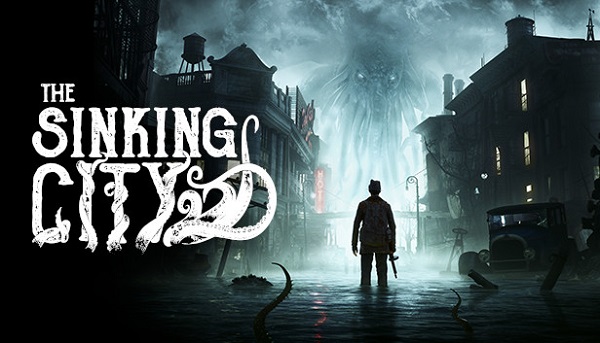
The Sinking City is a very modern adventure game. Like classic adventure games of yore, it gives you a vague idea about what needs to be done, and then it’s up to you to go find clues and piece together the solution. But also, since it’s more modern, it takes place in an open world, features plenty of combat and skill trees, makes you craft your own items, and most importantly of all, has detective vision. You know, all of the same old bullet points that every single AAA game incorporates these days.
Of course, I didn’t know about any of that going in. All I knew was that a couple of YouTubers that I follow have played it, there’s a big Cthylla face on the cover, and it was on sale for $13. None of those reasons alone are enough to get me to purchase a game without looking up a review, but the stars aligned that day, and I have to say that I’m glad they did.
The Sinking City opens with private investigator Charles Reed (don’t call him Charlie) heading to the town of Oakmont to investigate the source of the wild nightmares that he’s been experiencing. Apparently, people in the city are suffering from the same nightmares, so answers may lie somewhere within. Oakmont has also recently suffered a fairly catastrophic flood, leaving half of the city underwater and the other half in shambles.
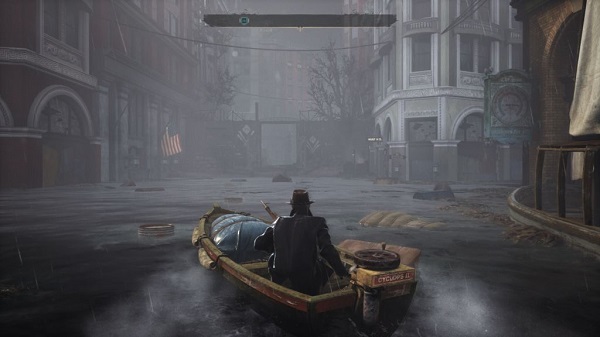
Right off the boat, Charles is tasked with finding a missing person and then solving a murder case. This is your tutorial on how to solve cases. Generally, it involves talking to people to collect information, finding a crime scene, collecting evidence, and then piecing together the clues to make deductions about what happened. Once you find all the key pieces of evidence at a scene, you’ll also get to see little snippets of what happened, which you have to then put in order to actually see how the crime played out.
The standout part of it for me, though, was using the city’s resources to help in your investigations. Sometimes, you just get a bit of a hint about a person or organization, but it’s not nearly enough to go on. At that point, there are several places in the city, like the police station, hospital, or newspaper, that you can go to look up information in their archives. Need to find someone who suffered a major axe wound? Check the hospital’s surgery records. Need to find where the local KKK chapter hides out? Check the police’s violent crimes records. So on and so forth. It’s a fairly small feature that I’m sure many would find tedious, but for me, it really helped to make me feel like I was actually doing detective work.
While the detecting was a lot of fun, the other major gameplay element was less enthralling. That would be the combat. I’ve read that a lot of people found it really janky, but I wouldn’t say that. I would say that it’s completely average. Not bad by any means, but it doesn’t bring anything unique or exciting to the table. It’s a very standard point-and-shoot kind of system, without any bells or whistles. There’s no cover mechanic, you can’t dodge or block, there’s no special psychic powers. You just pull out a gun and unload until things stop attacking you. Also there are really only five enemy types, and one of them is “people”, so you’re more than likely to see every enemy in the game within the first hour.
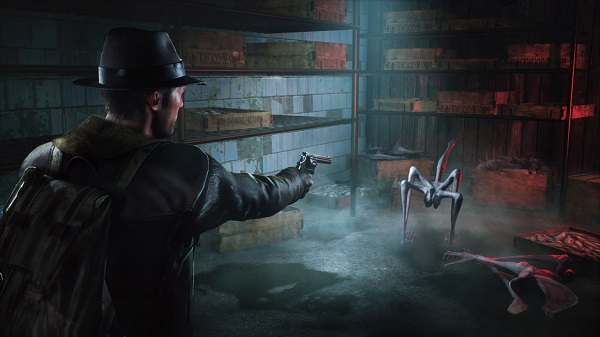
It’s also surprisingly easy. While bullets are currency in Oakmont, and the game takes every opportunity to tell you that resources are scarce and you should try to avoid combat, running out of bullets is rarely an actual issue. I spent basically the entire game with a full inventory, constantly being told that I couldn’t carry any more of materials x, y, and z when looting random cupboards. Resources are actually quite plentiful once you learn where you look, and if you feel like really cheesing the game, all resource points are refilled any time you load the game. What you get from any given loot container is randomized, but it still wouldn’t take long to loot, save, load, and repeat until your pockets are full to bursting.
While navigating the city and solving crimes is a lot of fun, The Sinking City is not without its faults. A small one that tripped me up far too many times is that key items will often be placed under collectible notes. So you’ll grab the piece of paper off the table, read the note, and then mosey on your way, not noticing that a key was under that note. Maybe that one’s my own fault for being too hasty, but it was still annoying. Another thing that plagued me throughout the entire game was that the HUD compass is poorly designed. There’s no mini-map, so you’re reliant on the compass if you want to get anywhere without constantly opening the map screen. But the compass points are nearly impossible to read, being teeny-tiny gray letters on a gray background. Really poor design. The last thing that really irked me were the underwater segments. There are four or five times where you need to dive to underwater caves, and getting there is… slow. It’s just a short jaunt across a spooky underwater landscape, but it’s boring and linear and doesn’t add much to the overall experience.
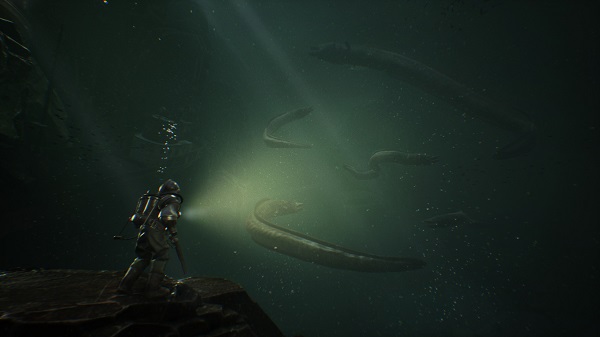
Circling back to the story, The Sunken City is inspired by the works of H.P. Lovecraft, and that’s really enough to set the stage for what you can expect in this game. Your main goal is effectively to stop Charles from going insane in a world which is brimming with madness. I won’t say too much about any of the actual story beats, but I did find the overall plot interesting enough to keep me engaged with the game. So much so, that it was really the thing that kept me chomping at the bit for my next play session. Each main case was also interesting enough in its own right, in addition to how they fit into the larger narrative. There are a few lingering threads that didn’t really get tied up or pay off in a satisfying way, but they’re all relatively minor and did not hurt my appreciation of the story.
I also really like the world, which is quite unlike any sandbox I’ve played in before. The idea that half of Oakmont’s streets are flooded and you have to hop into a boat to travel through many areas is fresh and fun. Each district has its own look and shows the different standards of living in the city. Keeping monsters confined to walled-off areas is convenient for players who don’t care for combat, and adds another wrinkle to navigating your way through Oakmont. The only major problem I have with it is that there are like three different building interior templates that are copy/pasted everywhere. Even when they don’t make any structural sense. For example, one mansion that has at least three times the square footage of any other residence in the city, but has the exact same interior as any every other two-story house.
During your stay in Oakmont, you’ll meet a number of characters, some good, some bad, some in the nebulous space between. Some of them, you’ll never really be able to get a good read on. The common thread between them is that they all want something before they’re willing to help Charles. Occasionally, you’ll get the chance to make some choices that impact how a character’s storyline unfolds, and more often than not they end up being literal life-or-death decisions. The problem is that, like many games that offer narrative choices, your decisions don’t actually matter. Yeah, maybe a character dies, but you’ll still end up getting a reward or clue from someone else, and the game’s three endings are hinged entirely on a choice you make at the very end of the game. It’s great for people who just want to see all three endings, but it also makes every single choice you made feel a little bit meaningless. It’s Mass Effect 3 all over again.
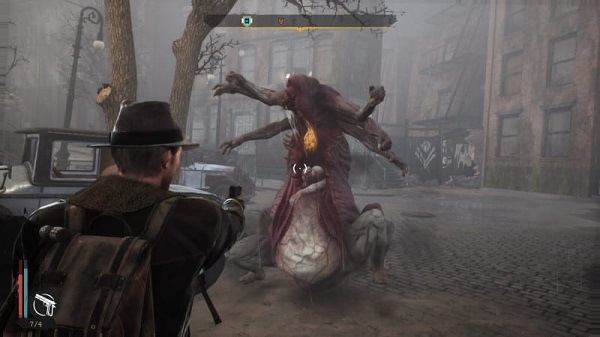
Speaking of mixed bags, let’s talk about side quests for a moment. Or, side cases, as the game calls them. There are two kinds: The first are given to you by citizens of Oakmont, and these ones either tie into the main plot in some way or provide some additional background or depth to the quest giver. These are the good ones. The second type are ones that come to you either by letter or just being randomly found around the world. These are literally just treasure hunts, and I did not care for them. Both types of side cases provide material rewards in the way of experience points and bullets/crafting materials, but the treasure hunts felt more like tedious busywork than anything. They didn’t really add anything to the game besides a lot of unnecessary firefights and padding out the run time. Spend 30 minutes running back and forth across Oakmont for an extra level up? Feelsbadman. Especially when you realize that about a third of the nodes on the skill trees offer little to no functional benefit.
Visually speaking, The Sinking City lives somewhere on the cusp of “good-looking.” The basic visual quality is perfectly fine. Character models are a little grotesque, but it fits the theme. There’s a good amount of variety in the environments, and are all packed to the brim with clutter *ahem* I mean, detail. You’ll see repeating signs and posters, but not so much that it becomes a problem. However! As this is not actually a AAA game, there are some visual shortcomings and issues that Frogwares may not have had the budget to iron out. Most notably is that cloth physics tend to go wild when fabric objects are drawn onto the screen. I think there’s a grand total of 12 models for unnamed NPCs? Character animations in dialogue tend to be weird and get recycled very often, and there are glaring cuts between lines. There’s a jarring cut to black before most dialogue scenes begins. There’s usually a weird black loading screen when you enter houses, but not always, and never when you leave.
On the other hand, I can’t think of any notable shortcomings in The Sunken city’s audio design. Music is sparse and unobtrusive, and sound effects are typically very good and fitting. Gunshots have a satisfying punch, monster roars and gurgles are nightmarish, I don’t know what else to highlight? NPCs on the streets will either tell you to back off or ask you for a handout, but that’s kind of on point for how Oakmonters treat outsiders. Being a game that leans heavily on its story, there is a ton of dialogue, and the voice acting is generally very good. There is exactly one instance I can think of that absolutely needed another take. Accents cover the spectrum from solidly American to thick Irish, which is what you would expect for a game that takes place in 1920’s Massachusetts. Or at least, it’s what I would expect, based on similar media.
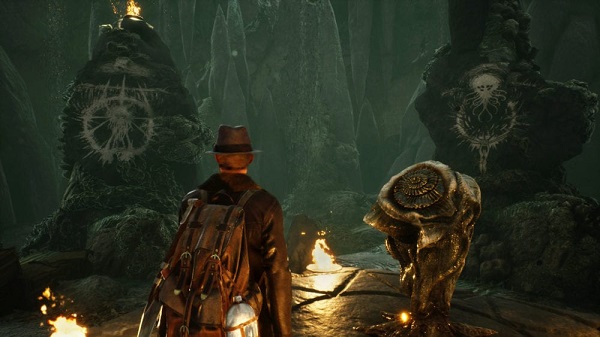
I think that I actually wrote a lot more negative things in this review than I would normally like to. I liked The Sunken City! Though you might not realize it by all the words that you (presumably) just read. I think it’s a fairly good video game, and certainly the good parts outweigh all the little nitpicks that I have. The world and characters are developed well, and the story alone would have been enough to see me through to the end. Most importantly, as long as you’re not playing on the Newcomer mode, it doesn’t hold your hand and really puts you in charge of doing the detective work. There’s even a Master Sleuth mode that doesn’t tell you when you’ve collected all the evidence at a crime scene. Combat is basic, but it adds a little bit of excitement to keep you on your toes between investigations and travelling around the city.
In summation, The Sinking City won’t change any lives, but it’s a fun, fresh take on the classic adventure game formula. I liked it a lot, and I would certainly give it my seal of approval. I’ll leave you with one spoiler so that you can adjust your expectations accordingly: Cthulhu is not in this game.
